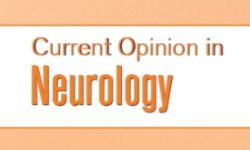 “To review the history, pharmacology, and clinical science of cannabidiol (CBD) in the treatment of epilepsy.
“To review the history, pharmacology, and clinical science of cannabidiol (CBD) in the treatment of epilepsy.
RECENT FINDINGS:
Phase III randomized controlled trials and prospective open label trials have provided efficacy and safety data for the use of CBD in pediatric onset severe epilepsies. The product that was studied in the vast majority of these published trials, Epidiolex (>99% of CBD and <0.10% Δ9-tetrahydrocannabinol (THC); GW pharmaceuticals, Cambridge, UK), has now been FDA approved based on this published data.
SUMMARY:
Identification of CBD, Δ9-THC, and the endocannabinoid system in the mid-20th century has led to advancement of cannabis-based therapies for epilepsy. Based on clinical trial data, Epidiolex is the first CBD medication approved by a national regulatory agency (US Food and Drug Administration for Dravet and Lennox Gastaut syndrome; European Medicines Agency for Lennox Gastaut syndrome). Approval of CBD as a treatment for these rare and severe pediatric-onset epilepsy syndromes is an important milestone, but the complete spectrum of use of cannabis-derived products, and the use of CBD for other epilepsy syndromes remains to be determined.”

 “Marijuana extracts (
“Marijuana extracts (

 “Major depressive disorder is a devastating psychiatric disease that afflicts up to 17% of the world’s population. Postmortem brain analyses and imaging studies of patients with depression have implicated basal lateral amygdala (BLA) dysfunction in the pathophysiology of depression. However, the circuit and molecular mechanisms through which BLA neurons modulate depressive behavior are largely uncharacterized. Here, in mice, we identified that BLA cholecystokinin (CCK) glutamatergic neurons mediated negative reinforcement via D2 medium spiny neurons (MSNs) in the nucleus accumbens (NAc) and that chronic social defeat selectively potentiated excitatory transmission of the CCKBLA-D2NAc circuit in susceptible mice via reduction of presynaptic cannabinoid type-1 receptor (CB1R). Knockdown of CB1R in the CCKBLA-D2NAc circuit elevated synaptic activity and promoted stress susceptibility. Notably, selective inhibition of the CCKBLA-D2NAc circuit or administration of synthetic cannabinoids in the NAc was sufficient to produce antidepressant-like effects. Overall, our studies reveal the circuit and molecular mechanisms of depression.”
“Major depressive disorder is a devastating psychiatric disease that afflicts up to 17% of the world’s population. Postmortem brain analyses and imaging studies of patients with depression have implicated basal lateral amygdala (BLA) dysfunction in the pathophysiology of depression. However, the circuit and molecular mechanisms through which BLA neurons modulate depressive behavior are largely uncharacterized. Here, in mice, we identified that BLA cholecystokinin (CCK) glutamatergic neurons mediated negative reinforcement via D2 medium spiny neurons (MSNs) in the nucleus accumbens (NAc) and that chronic social defeat selectively potentiated excitatory transmission of the CCKBLA-D2NAc circuit in susceptible mice via reduction of presynaptic cannabinoid type-1 receptor (CB1R). Knockdown of CB1R in the CCKBLA-D2NAc circuit elevated synaptic activity and promoted stress susceptibility. Notably, selective inhibition of the CCKBLA-D2NAc circuit or administration of synthetic cannabinoids in the NAc was sufficient to produce antidepressant-like effects. Overall, our studies reveal the circuit and molecular mechanisms of depression.”
 “∆9 –Tetrahydrocannabinol (∆9-THC) and cannabidiol (CBD), major psychoactive constituents of marijuana, induce potentiation of pentobarbital-induced sleep in mice.
“∆9 –Tetrahydrocannabinol (∆9-THC) and cannabidiol (CBD), major psychoactive constituents of marijuana, induce potentiation of pentobarbital-induced sleep in mice.